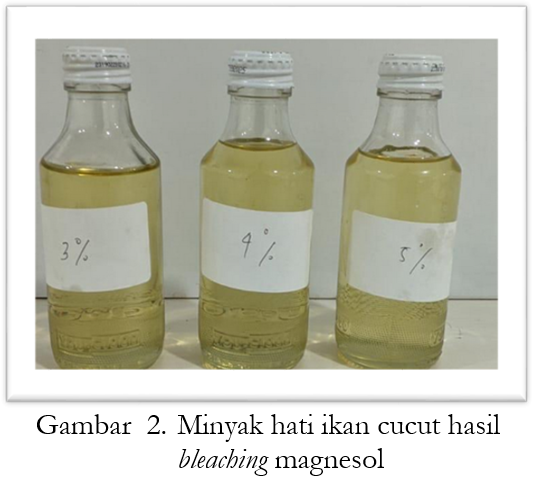Main Article Content
Abstract
The utilization of by-products from PPI Ujong Baroh in the form of shark liver, extracted using dry rendering method to produces crude oil and has significant potential due to its high yield and fatty acid content. The crude oil requires refining to meet established standards, one of which is the International Fish Oil Standard (IFOS) for safe human consumption. This study aimed to utilize shark liver by-products and bleaching with magnesol adsorbents to produce purified oil. The extraction used a dry rendering method at a temperature of 50°C for 5 hours. Bleaching was carried out using adsorbents at differetn concentrations (of 3%, 4%, and 5%). The experimental design applied in this study was a Completely Randomized Design (CRD) with a single treatment factor. Analysis of fish oil includes calculation of free fatty acids, peroxide value, density and viscosity. Shark liver oil extracted using dry rendering method resulted in yields ranging from 59% to 61%. The free fatty acid (FFA) values of the shark liver oil ranged 0.22-0.23% and met the IFOS standard (≤ 1.13%) for all treatments. The peroxide values ranged 3.26-3.34 mEq/kg and met the IFOS standard (≤ 3.75 mEq/kg) for all treatments. The density of the shark liver oil met the ISO 6883:2017 standard (≤ 0.86 g/mL) with the value 0.81-0.82 g/mL. The viscosity of the shark liver oil ranged from 31.45±0.21 cP to 31.48±0.21 cP. Data analysis indicated no significant differences among treatments. The results showed that the magnesol adsorbent effectively enhanced the quality of the fish oil.
Article Details

This work is licensed under a Creative Commons Attribution-NonCommercial-ShareAlike 4.0 International License.

